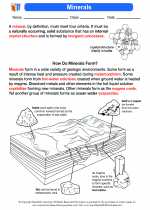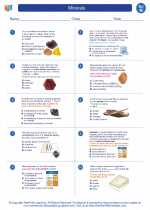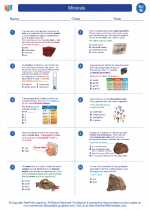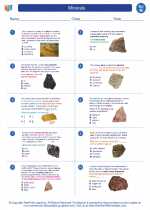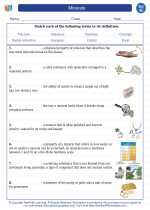Minerals -> decomposition reactions
Decomposition Reactions
A decomposition reaction is a type of chemical reaction in which a single compound breaks down into two or more simpler substances. These reactions are the opposite of combination reactions, in which two or more substances combine to form a single compound.
General Equation for Decomposition Reactions
The general equation for a decomposition reaction is:
AB → A + B
Where AB is the compound that breaks down into its constituent elements, A and B.
Types of Decomposition Reactions
There are several different types of decomposition reactions, including:
- Thermal decomposition: This type of decomposition reaction is triggered by heat. For example, the decomposition of calcium carbonate (CaCO3) into calcium oxide (CaO) and carbon dioxide (CO2).
- Electrolytic decomposition: This type of decomposition reaction is triggered by passing an electric current through a compound. An example is the electrolysis of water (2H2O) into hydrogen gas (H2) and oxygen gas (O2).
- Photolytic decomposition: This type of decomposition reaction is triggered by light. An example is the decomposition of silver chloride (AgCl) into silver (Ag) and chlorine (Cl2) when exposed to sunlight.
Study Guide
When studying decomposition reactions, it's important to understand the following key points:
- Recognizing the general equation for a decomposition reaction: AB → A + B
- Identifying different types of decomposition reactions and their triggers (thermal, electrolytic, photolytic)
- Understanding specific examples of decomposition reactions, including the compounds involved and the products formed
- Practicing balancing decomposition reactions using the law of conservation of mass
- Exploring real-world applications of decomposition reactions, such as in the production of metals, extraction of oxygen from water, and decomposition of pollutants
By mastering these key points, you'll have a solid understanding of decomposition reactions and be prepared for any related questions or problems.
.

